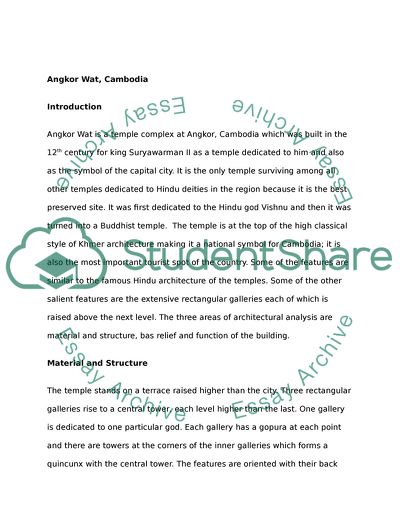Cite this document
(Angkor Wat, Cambodia Assignment Example | Topics and Well Written Essays - 2193 words - 1, n.d.)
Angkor Wat, Cambodia Assignment Example | Topics and Well Written Essays - 2193 words - 1. Retrieved from https://studentshare.org/culture/1748284-buildings-analysis-project
Angkor Wat, Cambodia Assignment Example | Topics and Well Written Essays - 2193 words - 1. Retrieved from https://studentshare.org/culture/1748284-buildings-analysis-project
(Angkor Wat, Cambodia Assignment Example | Topics and Well Written Essays - 2193 Words - 1)
Angkor Wat, Cambodia Assignment Example | Topics and Well Written Essays - 2193 Words - 1. https://studentshare.org/culture/1748284-buildings-analysis-project.
Angkor Wat, Cambodia Assignment Example | Topics and Well Written Essays - 2193 Words - 1. https://studentshare.org/culture/1748284-buildings-analysis-project.
“Angkor Wat, Cambodia Assignment Example | Topics and Well Written Essays - 2193 Words - 1”, n.d. https://studentshare.org/culture/1748284-buildings-analysis-project.


